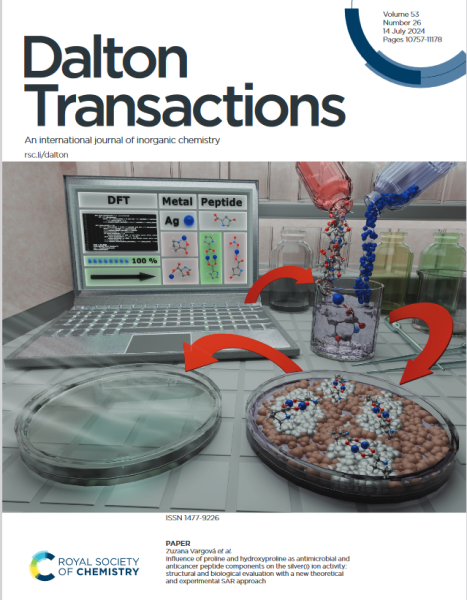The field of modern medicine faces new challenges in the fight against multi-resistance of pathogenic microorganisms as well as cancer cells, which cause serious and life-threatening diseases all over the world.

The scientific team of prof. RNDr. Zuzana Vargová, Ph.D. at the Department of Inorganic Chemistry, Institute of Chemistry, Faculty of Science, is focused on the synthesis and characterization of new bioavailable, predominantly silver complexes, since silver ions themselves have proven antimicrobial and, in recent years, anti-neoplastic effects. The research group in cooperation with Charles University in Prague, University of Veterinary Medicine and Pharmacy in Košice, Institute of Physical Chemistry of the CAS in Prague and Faculty of Medicine UPJŠ in Košice prepared and characterized two new silver coordination compounds that show promising in vitro and in ovo results. This results were published in the prestigious scientific journal Dalton Transactions (Q1). The new experimental-theoretical approach to the correlation of chemical, biological and pharmaceutical parameters interested the editor team of the journal and they decided to provide space for the presentation of this work on the cover of the magazine as well. Based on the experimental results, it can be concluded that the prepared AgPro and AgHyp silver complexes in low concentration effectively stop the growth of B. cereus and S. aureus bacteria, while their antibacterial activity is comparable to the effect of silver sulfadizin.
At the same time, the anticancer activity of the mentioned silver compounds was significantly higher even in the MDA-MB-231 cancer line than the activity of the simultaneously used drug – cisplatin. Among other things, the study of the potential vasoirritation of the prepared silver complexes demonstrated the safety of intravenous administration of these substances.
Kuzderová, G., Sovová, S., Rendošová, M., Gyepes, R., Sabolová, D., Kožárová, I., Balážová, Ľ., Vilková, M., Kello, M., Liška, A., Vargová, Z. (2024). Influence of proline and hydroxyproline as antimicrobial and anticancer peptide components on the silver(i) ion activity: structural and biological evaluation with a new theoretical and experimental SAR approach.









